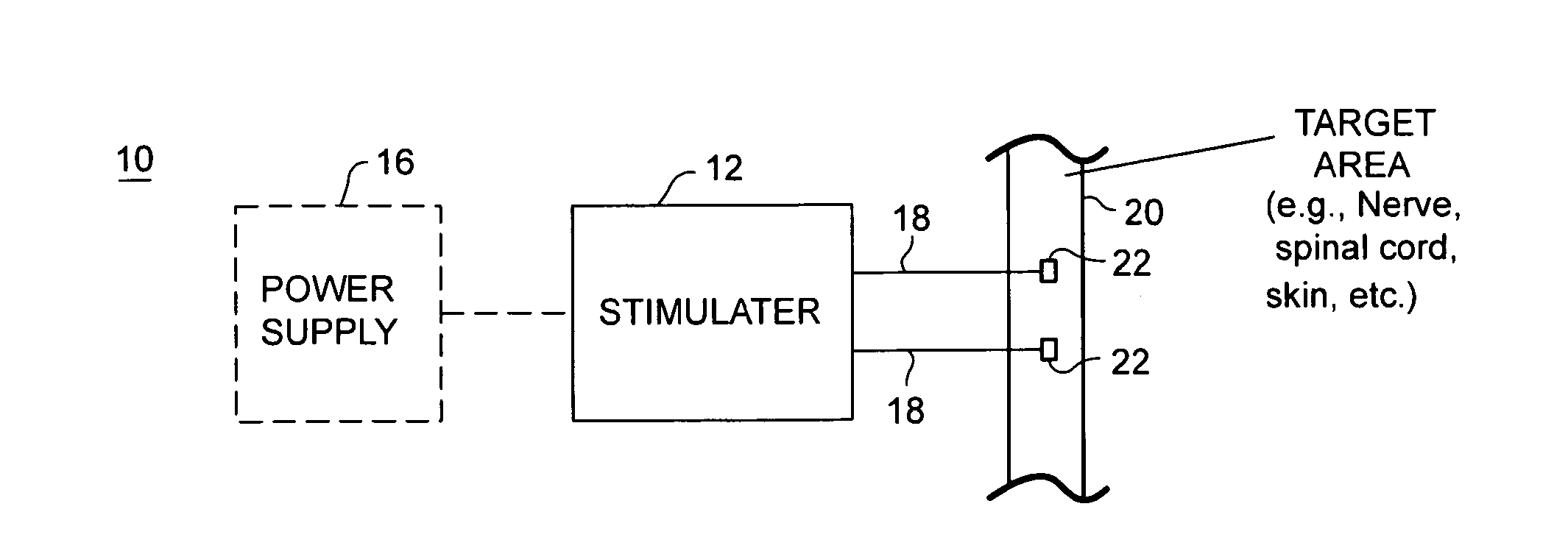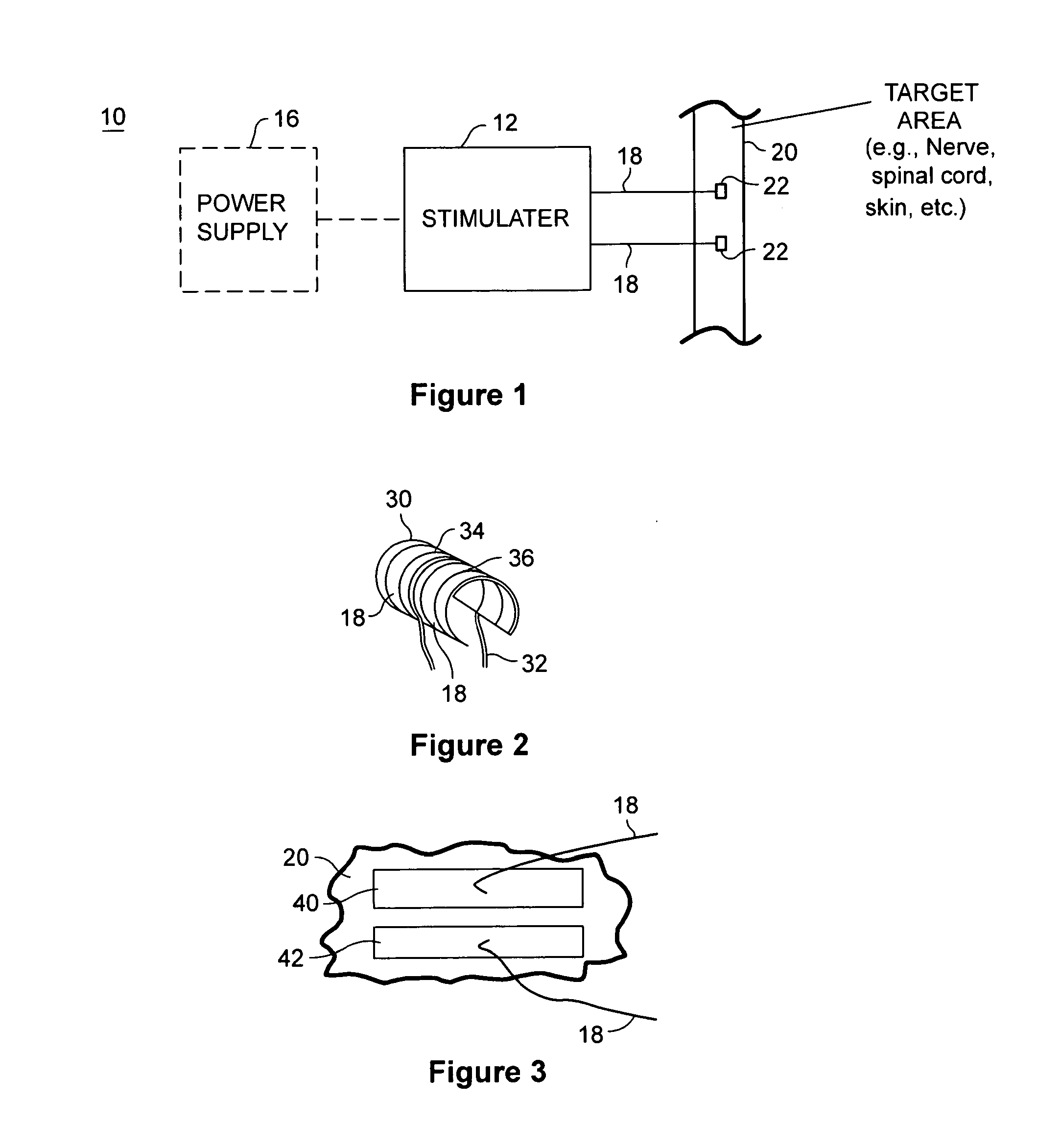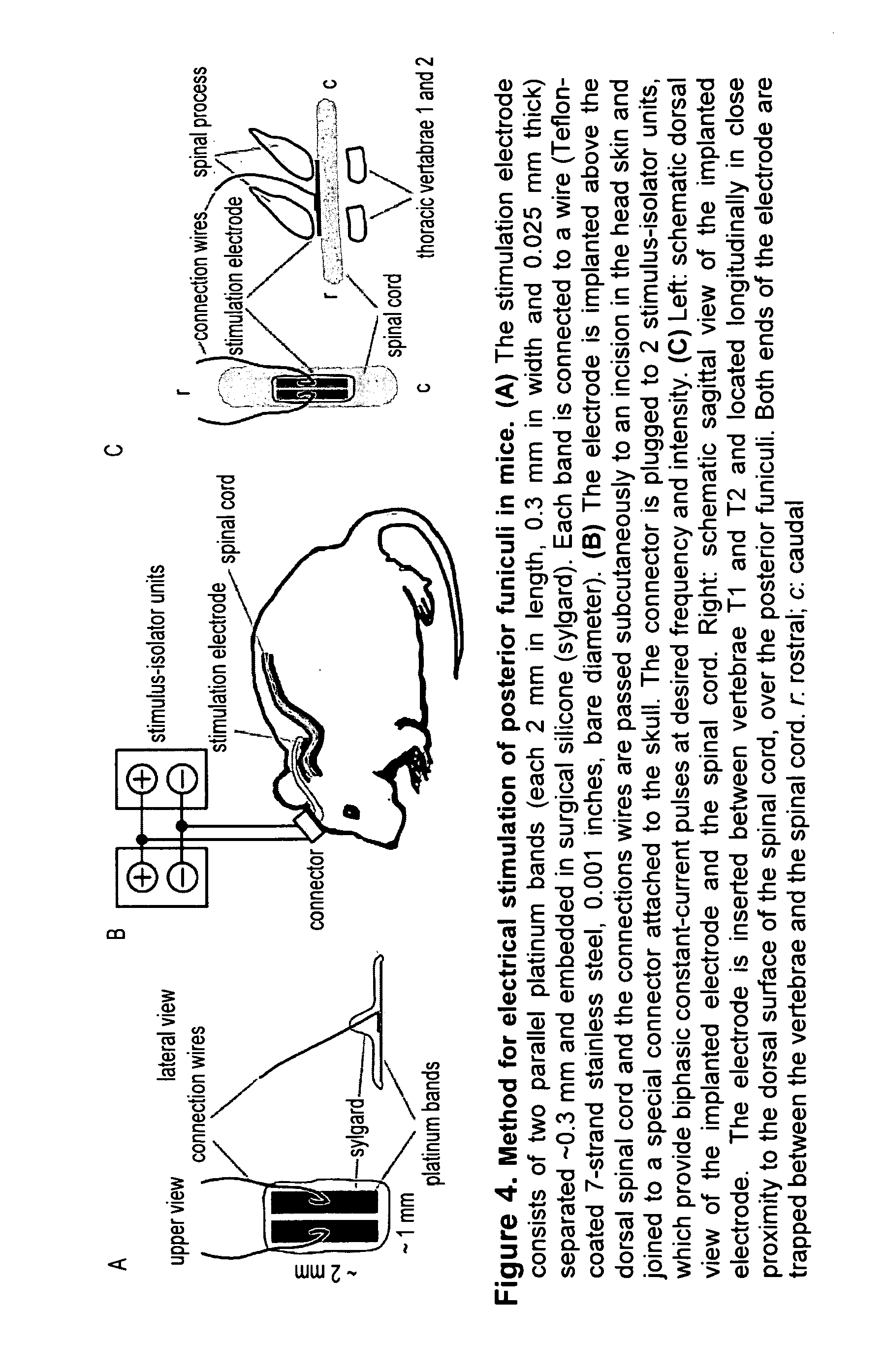Method of treating parkinson's disease and other movement disorders
a technology for movement disorders and parkinson's disease, applied in the field of movement disorders, can solve problems such as disruption of the type of pathological synchronous activity observed, and achieve the effect of inhibiting motor regions
- Summary
- Abstract
- Description
- Claims
- Application Information
AI Technical Summary
Problems solved by technology
Method used
Image
Examples
example 1
[0057]It has been possible to disrupt aberrant synchronic activity of neural populations observed in normal mice partially depleted of dopamine or transgenic mice completely depleted of dopamine using stimulation of peripheral nerves, such as the trigeminal nerve. In these studies, a cuff electrode was chronically implanted around the infraorbital nerve, a branch of the trigeminal nerve. This approach was employed to test the efficacy of peripheral nerve stimulation, as compared to DBS, in alleviating motor impairment in: i) wild type mice in which dopamine was partially depleted, and ii) a transgenic animal model of PD (the DAT-KO mouse) in which dopamine was almost completed depleted from the brain. Preliminary results show that aberrant low frequency oscillations patterns of neural activity from the corticostriatal circuit induced by partial dopamine depletion in wild type mice can be decreased and locomotive activity restored by infraorbital stimulation (IS).
[0058]The first step...
example 2
Experimental Details
[0070]Parkinson's disease model. C57BL / 6 wild type male adult mice were used. Animals were treated with 250 mg / kg of the tyrosine hydroxylase inhibitor, α-methyl-p-tyrosine, every 2 hours, until akinesia and catalepsy were displayed. The key of this manipulation is a decrease of dopamine in the central nervous system to less than 40% of normal levels, thus resembling parkinsonian condition. Akinesia and was assessed by visual inspection, while catalepsy was assessed by a custom test. Treated animals exhibited those symptoms for several hours after last injection.
[0071]Posterior funiculi stimulation. (FIG. 4A) The electrode used to effect dorsal funiculi stimulation consists of two parallel platinum bands (each 2 mm in length, 0.3 mm in width and 0.025 mm thick) separated ˜0.3 mm and embedded in surgical silicone (Sylgard). Each band is connected to a wire (Teflon-coated 7-strand stainless steel, 0.001 inches, bare diameter). (FIG. 4B) The electrode is implanted a...
example 3
Experimental Details
Animals
[0077]In total 28 wild-type and 8 DAT-KO C57 / BL6J mice and 8 Long-Evans rats were used. Animals were kept on a 24 hour day-night cycle and received food and water ad libitum. All the procedures involving animals were done according the protocols approved at Duke University.
[0078]In a single surgery both stimulation and recording electrodes were implanted under deep Ketamine / Xylozine anaesthesia (50-90 mg / kg). The flat stimulation electrode was inserted between vertebrae T1 and T2 in mice and between T2 and T3 in rats placed longitudinally in the epidural space over the dorsal columns, thereby being in close proximity to the dorsal surface of the spinal cord. Both ends of the electrode were inserted under the laminae of the vertebral arcs of the adjacent vertebrae effectively stabilizing the implant. For trigeminal stimulation, cuff-electrodes were implanted bilaterally in the infraorbital nerve as previously described (Fanselow et al, J. Neurosci. 2...
PUM
 Login to View More
Login to View More Abstract
Description
Claims
Application Information
 Login to View More
Login to View More - R&D
- Intellectual Property
- Life Sciences
- Materials
- Tech Scout
- Unparalleled Data Quality
- Higher Quality Content
- 60% Fewer Hallucinations
Browse by: Latest US Patents, China's latest patents, Technical Efficacy Thesaurus, Application Domain, Technology Topic, Popular Technical Reports.
© 2025 PatSnap. All rights reserved.Legal|Privacy policy|Modern Slavery Act Transparency Statement|Sitemap|About US| Contact US: help@patsnap.com



